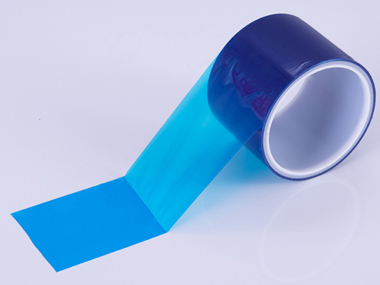Dec. 17, 2022
A protective film is a material that protects vulnerable surfaces: light or moderate wear to scratches etc. An example of this is a vehicle. Protective films help to protect cars from the daily wear and tear and other more rare damage that comes with everyday use.
Each type of protective film is available in a variety of styles, designed for a variety of applications, and they often vary according to thickness, material and adhesive strength. Based on various combinations of these properties, these films can be used appropriately in a variety of scenarios to provide protection.
Self Adhesive Protective Film For Aluminum Profiles And Plates
High quality surface protection films can be easily applied and removed while providing a smooth finish to the surfaces they are used on. These films are specifically designed to add a layer of protection to fragile surfaces: glass, commercial glass, plastics, stone, brick, granite, marble, etc.
Industries specialising in the manufacture and distribution of packaged products often find themselves in need of this protection. However, cutting these films into the right shape to fit the various surfaces becomes difficult. It is also important to ensure minimal blistering during application, which often requires specialist surface protection film expertise.
Paint protection films usually have a high impact resistance. Variants such as clear bra or paint protection films (PPF) even have "self-healing" properties, allowing them to return to their natural shape after impact or abrasion.
Protective Films
These types of films are often made from flexible polymers that provide elasticity to the film, and they are often invisible, allowing the object to retain its aesthetic value while adding a degree of protection. This is why common uses include mobile phones, electronics, cars, aircraft and other devices.
Although PPF is not bulletproof, it does offer excellent protection against rock chips and other environmental contaminants. It is also chemically resistant, allowing you to wash or clean equipment without fear of losing adhesives or being unable to perform maintenance operations.
To properly select the right film for your needs, you should consider the following factors.
Installing cheap film that will deteriorate within a few months is counterproductive. Instead, invest in a high-quality branded film that offers durability.
This leads us perfectly to the next point.
Protective Film for Aluminium Profiles and Plates
Make sure you invest in a product with good customer service and a great warranty. Typically, 3M PPF is available with a warranty of up to 10 years. This is useful for equipment such as cars that you may use for a long time.
Now that you understand the role of the material in determining the quality of the film, make sure you ask questions about it. At the very least, you should be able to get PPF that meets all the basic requirements for scratch resistance, abrasion resistance and UV protection.
Of course, quality may also depend on your budget, but on the whole it is not difficult to get high quality at a reasonable price.
The application or installation of protective films can be a challenging task, especially if you are inexperienced. Ideally, you should hire an expert to perform this operation to ensure that bubbles are avoided on the surface.

Protective Film For Marbles And Ceramics
In general, a successful installation of protective film will result in the following.
Dust and debris must be removed from the surface first so that it can be applied smoothly and fit tightly. Surfaces that have not been cleaned properly may have air bubbles. In addition, debris underneath the film may weaken the barrier and shorten the life of the film. Surfaces must also be free of grease so that the adhesive adheres well to the surface.
Some suppliers sell pre-cut film sheets that can be applied directly to clean surfaces. However, it is wise to obtain a custom cut from an experienced converter for use on equipment or vehicles in more complex systems.
Installation is the final step, during which the installer uses different procedures to ensure that the film adheres tightly to the object or surface. Spray-on fittings are a popular option to activate the glue or adhesive without damaging the painted surface. This must be done in a clean environment to prevent dust from collecting again on a clean surface.
Navigation
+86 158 1691 5404
+86 757 8271 3937
+86 757 8271 3937
No. 10 Industry Huacongsiyue Village, Shishan Town, Nanhai District, Foshan, Guangdong Province, China